Photo Album
Click on any photograph to enlarge it.
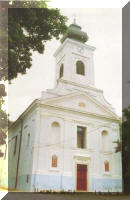
St. Istvan
Church was built from the remains of the original church of Turkish times. It
was constructed from 9 July 1781 to 5 November 1783

Rural setting of the town of Mucsi.
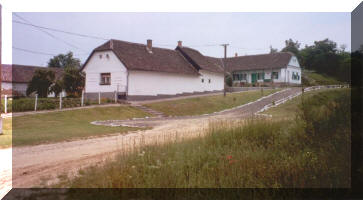
Example of a typical
house in Mucsi.
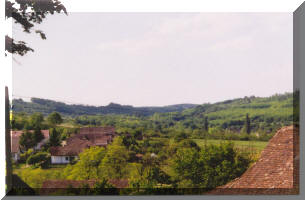
This view of Mucsi is taken from St. Istvan
Church.
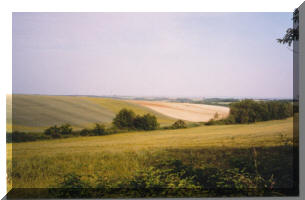
Mucsi is known for its rolling hills and farm
land.
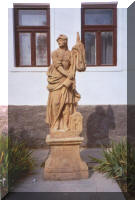
1795, This statue of St. Florian stands prominently
along the road. He is a Christian saint and the patron of fire fighters
and chimney sweeps.
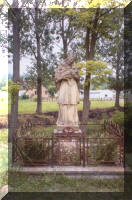
This statue of Saint John Nepomucen is located
at the lower part of town next to the bridge that crosses the creek. He is
the patron of confessors and bridges.
 Like many early Catholic villages, Mucsi has
several large crosses in different locations in town. These reminded
people of their Christian faith.
Like many early Catholic villages, Mucsi has
several large crosses in different locations in town. These reminded
people of their Christian faith.
 Memorial on the front of St. Istvan Church
lists the names of men from Mucsi who died in World War I.
Memorial on the front of St. Istvan Church
lists the names of men from Mucsi who died in World War I.
 On the right side of the front door of St.
Istvan another plaque lists the names of more men who died.
On the right side of the front door of St.
Istvan another plaque lists the names of more men who died.
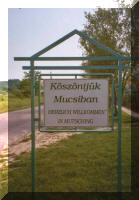 This simple sign along the road welcomes
visitors to the village of Mucsi.
This simple sign along the road welcomes
visitors to the village of Mucsi.
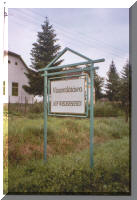 As visitors leave Mucsi, the back of the sign
wishes them a fond farewell.
As visitors leave Mucsi, the back of the sign
wishes them a fond farewell.
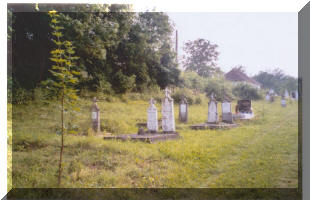
View of the entrance walk into the old cemetery behind St. Istvan Church.

Vew from the front shows the new Mucsi
cemetery in another part of town.
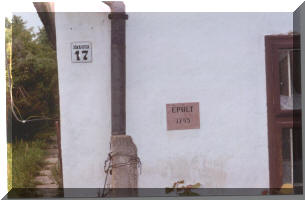
The rectory for St. Istvan Church was completed
in 1745 as noted on the plaque on the side wall.

The large monument recalls those men from
Mucsi who died in World War II.
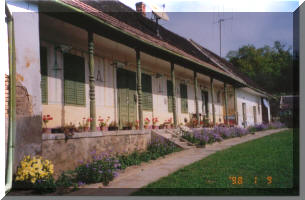
This
older home shows the typical Donauschwaben style for homes with a porch
the length of one side.
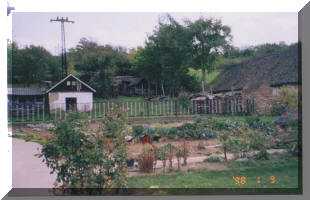 All
the residents of Mucsi have a garden where they grow vegetables for their
own meals.
All
the residents of Mucsi have a garden where they grow vegetables for their
own meals.
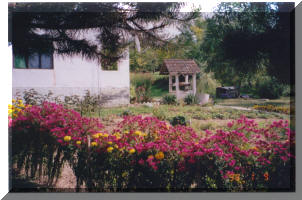
Most
of the homes in the villages have colorful flowers growing around the
yards.
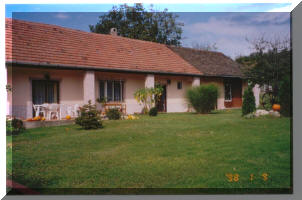
This
newer home in town still illustrates the style of the Donauschwaben
immigrants.